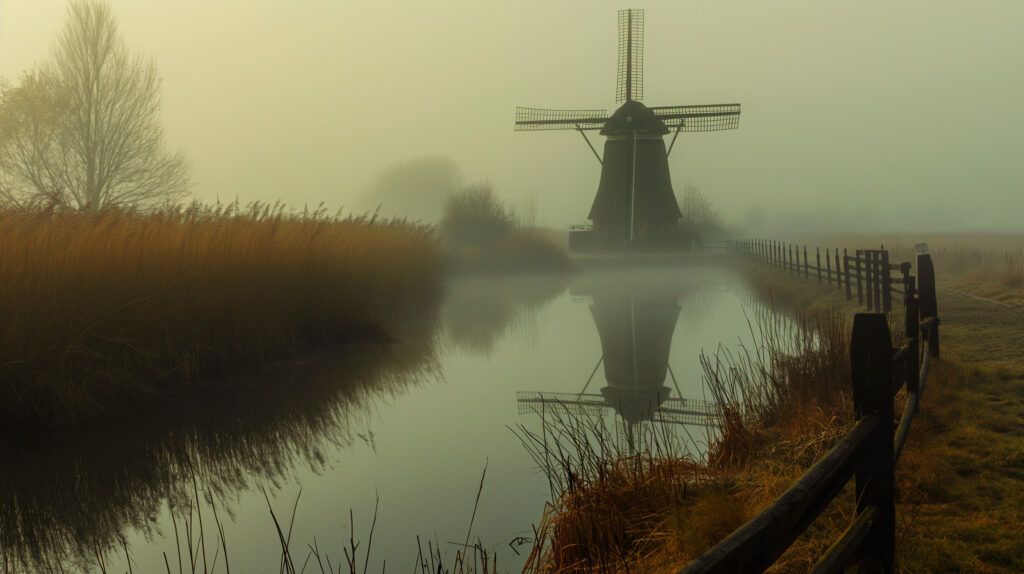
A lone windmill stands sentinel in the middle of a wide, slow-moving river. Its weathered wooden frame and gently turning blades seem to blend seamlessly with the muted tones of the winter landscape. The sky above is a swirl of gray and white, reflecting the stillness of the scene.
There’s a sense of quiet power in this image. The windmill, though seemingly unassuming, is a testament to human ingenuity, harnessing the wind’s energy to grind grain or pump water. Its presence in the middle of the river, a place of constant flow and change, adds a touch of permanence, a reminder that even in the midst of flux, some things endure.
But the windmill is more than just a practical tool. Its graceful form, silhouetted against the sky, takes on an almost sculptural quality. The slow, rhythmic turning of the blades creates a mesmerizing dance, a hypnotic counterpoint to the stillness of the water. It’s a scene that invites contemplation, a moment to pause and appreciate the simple beauty of the world around us.
The image also evokes a sense of history. Windmills have been a part of the landscape for centuries, and their presence in this particular scene hints at a long-forgotten past. We can imagine the lives of the people who once relied on this windmill, their days marked by the rhythmic creak of the blades and the steady flow of the water.
In a way, the windmill is a bridge between past and present, a reminder that our own lives are part of a larger story, a continuum that stretches back through time. It’s a call to connect with our roots, to appreciate the legacy of those who came before us, and to build upon their foundation.
So, let January 6th be a day to reflect on the past, to celebrate the ingenuity of the human spirit, and to find beauty in the simple things. Take a moment to stand still, to watch the wind turn the blades, and to listen to the stories whispered by the river. And remember, even in the quietest of places, there are always stories to be told, lessons to be learned, and beauty to be found.